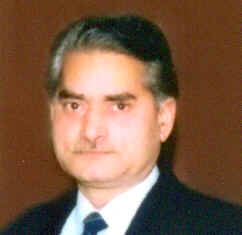Lalit Gupta
Besides the famed martial character, an inextricable strand of practice and appreciation of aesthetic expressions characterize the personality of Dogras since time immemorial.
The intangible heritage of rich folk music, dance and theatre along with tangible presence of ancient monuments—the sites of pan-Indian classical art and architecture, that dot the landscape of Jammu region—have been a constant source of pride and inspiration for the modern generations as well.
Jammu, the regional metropolis, being capital city and political and socio-cultural center, has always been a model for rest of the region. After 1947, due to dwindling royal patronage, the art and cultural activities increasingly came in public domain and few groups and members from some families of the city made noticeable contribution as patrons and even practitioners of different forms of artistic expressions literary, visual and performing arts.
One such family that made significant contribution in field of literature and theatre was that of Shanti Devi and Amar Chand Dharmat, an Income Inspector, who sired seven children. Out of these the eldest Shishu Pal made name as a leader of low-paid employees while Ved Pal Deep was a genius poet who single handedly created the genre of gazals in Dogri language and contributed towards the development of Dogri as a modern language.
Though Ved Pal Deep also had a short stint with theatre along with wife Padma, today well known as Padma Sachdev—under the influence of his maternal uncle Rattan Sharma, the well known theatre personality who galvanized modern theatre in 1960’s, 70’s and mid 80’s in Jammu—but it was Virendra Kumar, the fourth son of Amar Chand Dharmat, who emerged as a gifted theatre artist. He along with his younger brother Lalit Kundu electrified Jammu theatre scene from mid 1960’s through 1980’s.
Virendra Kumar, who was postgraduate in Geology took to many assignments as adhoc lecturer in different degree colleges of the State before settling down as teacher of social studies in Sainak School Nagrota near Jammu.
Born in 1942, Virendra Kumar popularly known as Billoo was drawn to stage since childhood He initially acted in the plays directed by Rattan Sharma and Triloki Das but it was after his other maternal uncle, Kavi Rattan, more or less same age as Billoo, arrived in Jammu after getting trained from National School of Drama, that Billo’s gift as a natural actor came into spotlight.
He figured as an actor in almost all plays directed by Kavi Rattan on behalf of J&K Cultural Academy or theatre group Bahurangi during 1970’s and 1980’s. Some of his best performances were in plays like Kis Ka Haath, Raja in Shutarmurg, Witch Doctor in Bhagwat Ajjukiyam, Sadhu in Matvilas, and Rangla in Jasma Aoudhan, Dancer in ‘Reed Ki Haddi’ and Mone in Khamosh Adalat Jari Hai.
The perfect timing of dialogues, body movements and the potent pauses made him an affective actor who excelled especially in comedy—a genre that is always a litmus test for any actor.
After becoming the warden of Sainak School hostel, it became difficult for him to commute from Nagrota to Jammu and back for theatre rehearsals etc. But his love, dedication and commitment for theatre found an alternative and he became instrumental in starting cultural club in the Sainak School Nagrota. Thus he not only satiated his own passion but also initiated generations of young students of Sainak School Nagrota to activities, which emerged as an affective tool of self-expression as well as personality development.
Since Virendra Kumar hailed from a family that did not hanker after publicity, he lived a quiet life after retirement from School. The road accident inflicted a neurological condition due to which he slowly lost left his memory and passed away in June 2012.
In the annals of Theatre History of Jammu, he will always be remembered as an accomplished and a dedicated theatre actor.


